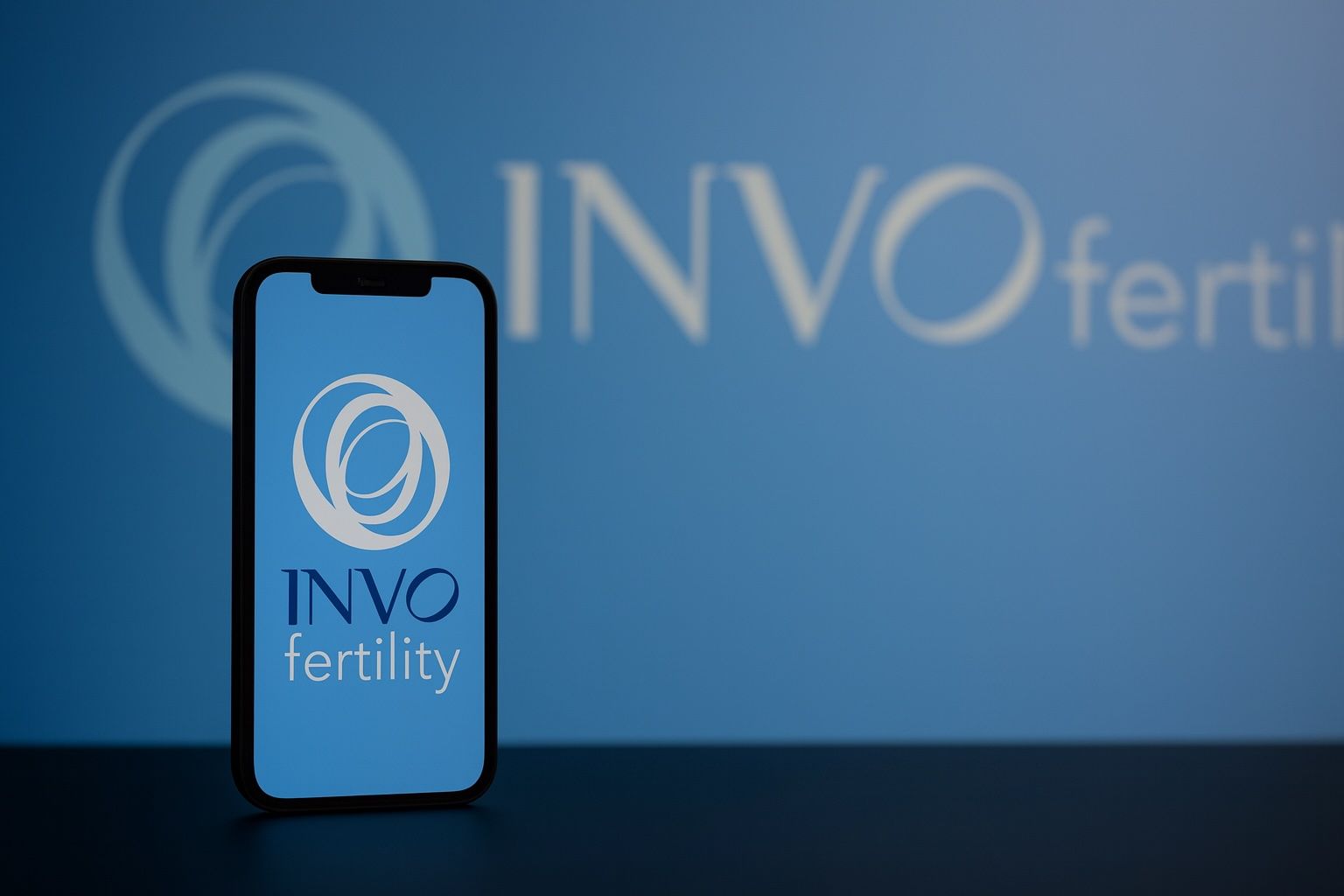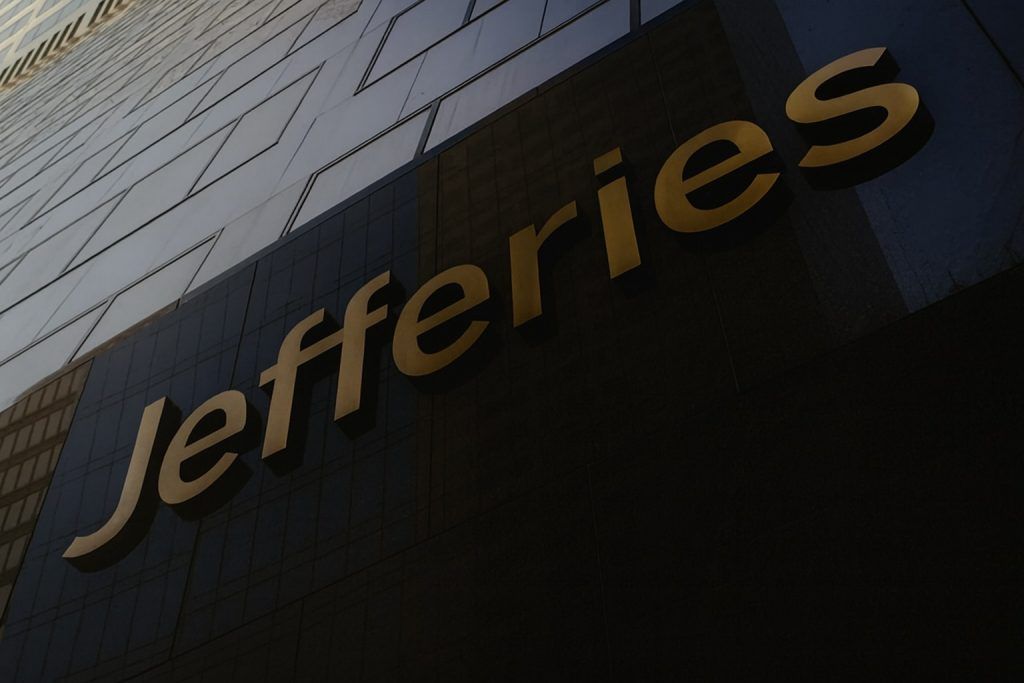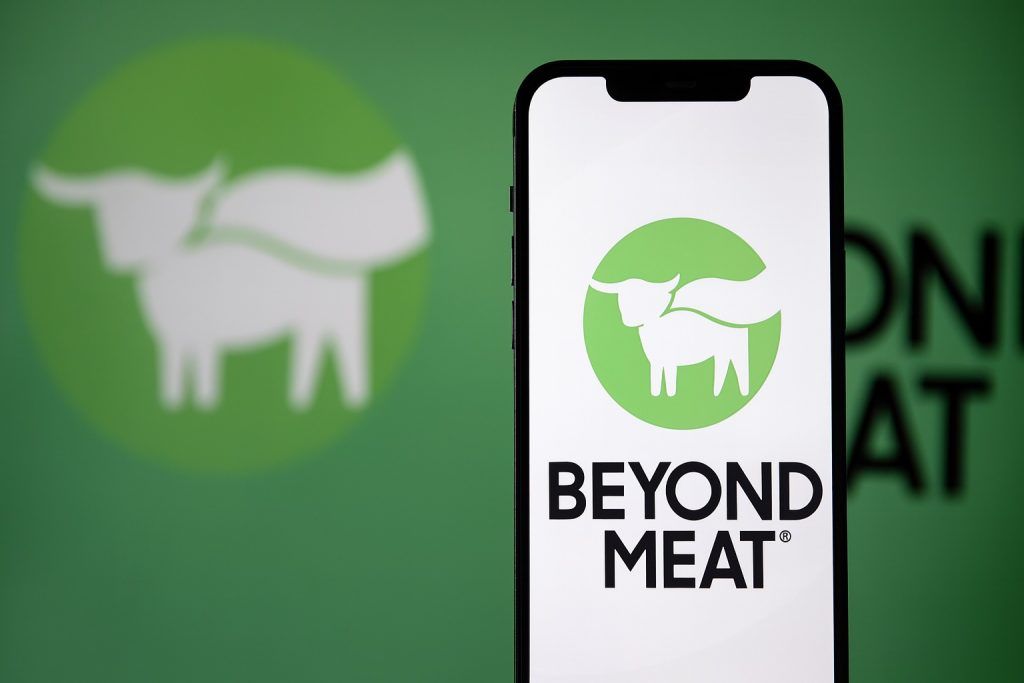- Massive One-Day Surge: INVO Fertility’s stock price nearly doubled on October 16, 2025, jumping about +89.6% to roughly $1.43 per share [1]. The micro-cap fertility clinic operator hit an intraday high of $2.03 (up from a prior close of $0.75) amid frenzied trading [2].
- Heavy Trading Volume: Over 108 million shares exchanged hands – hundreds of times the norm [3]. (The company’s public float is only ~5.5 million shares [4].) With just 0.75% of shares sold short [5], the rally appears momentum-driven rather than a short squeeze.
- Recent Volatility: The stock had hovered under $0.80 earlier in the week [6], so this spike marks a sharp reversal. Year-to-date, IVF has now nearly doubled (+95%) in 2025 [7], though it remains ~98% below its 52-week high of $42.48 (hit before major restructuring) [8].
- Company News & Cash Infusion: In the past week, INVO raised $200,000 via a private sale of preferred shares to an existing investor [9], offering a small liquidity boost to the cash-strapped firm. The company also filed to register ~8.35 million shares for resale by certain holders (per an Oct. 14 SEC filing) [10] – a move that could signal potential dilution but also frees insiders to sell stock.
- Financial Challenges vs. Optimism: INVO is not yet profitable (Q2 net loss was $3.2M) and faces liquidity strains (current ratio ~0.1) [11]. Analysts and management remain optimistic, however – projecting ~9.7% annual revenue growth ahead (above the industry average) [12] and highlighting a booming fertility market. A new patent extends INVO’s flagship IVF technology rights to 2040 [13], and government initiatives are expanding access to fertility treatments [14] [15], bolstering the long-term outlook.
Stock Price Soars Nearly 90% in One Day
INVO Fertility’s stock took investors on a wild ride on Oct. 16, skyrocketing almost 90% by the closing bell [16]. Shares opened at just $0.75 and, in an astonishing surge, hit $1.43 by day’s end (after touching $2+ at the peak) [17]. To put the move in perspective, INVO’s daily gain far outpaced the broader market, and such a jump is highly unusual – even in the volatile biotech sector. Trading volume exploded to over 108 million shares [18], dwarfing the typical daily volume (around ~33,000 shares) and exceeding the company’s entire share float many times over [19] [20]. This indicates a tidal wave of speculative interest flooded into the tiny stock.
Market observers noted that nothing fundamentally changed overnight with INVO’s business – instead, the price action seems to reflect momentum trading and sector buzz. Notably, short interest was minimal (under 1%) [21], so the rally was not a classic short squeeze forcing bears to cover. Rather, it appears traders piled in en masse, perhaps viewing INVO as an ultra-low-priced play on rising fertility trends. Until Oct. 16, INVO had spent most of October drifting around $0.75–0.80 per share [22]. The sudden liftoff caught many by surprise – though micro-cap stocks like INVO are known for extreme volatility, and this isn’t the first time INVO has seen a dizzying spike. (For example, shares surged ~60% in one day earlier this year after an earnings report beat expectations [23].) Still, the magnitude of the Oct. 16 jump underscores both the high risk and high reward nature of INVO’s stock. It’s a reminder that such dramatic moves can occur in penny stocks on shifts in sentiment or speculative fervor – even absent major news.
Recent Catalysts and Company News
While no single company announcement on Oct. 16 explains the surge, several recent developments may have set the stage by improving sentiment and drawing attention to INVO Fertility:
- Fresh Capital from Investor: This week, INVO disclosed that an institutional investor exercised a right to purchase $200,000 of Series C-2 preferred shares [24]. Essentially, an existing preferred shareholder injected a bit more cash into INVO (buying 200 preferred shares for $1,000 each). This small capital infusion is a vote of confidence from an insider and comes under a prior agreement allowing additional investment. The new preferred equity can convert to common stock (the conversion price was adjusted to about $0.66 per share for this tranche) [25]. While $200k is modest, cash is lifeblood for a micro-cap – and the move slightly boosts INVO’s liquidity as it navigates its expansion plans.
- Share Registration Filing: On Oct. 14, INVO filed an S-1 registration statement with the SEC to register ~8.35 million common shares for resale by certain holders [26]. These shares are likely related to recent financing deals (such as convertible preferred stock and debentures). Why is this significant? Registering the shares means those investors can freely sell them on the open market. Such filings sometimes put downward pressure on a stock (due to dilution fears), but in INVO’s case it may have also removed an overhang by clarifying the share count and letting the market absorb the potential dilution. Some traders could even interpret it optimistically – as a step toward cleaning up the capital structure and potentially enabling new investment. The filing highlights that INVO’s share count could rise substantially if those holders convert and sell, but it also increases transparency around the company’s financing arrangements.
- Financial Restructuring and Settlement: INVO has been actively shoring up its finances and resolving legacy issues in recent weeks. The company finalized a $6 million legal settlement with Dr. Elizabeth Pritts (and her trust) related to INVO’s acquisition of the Wisconsin Fertility Institute [27]. Settling this lawsuit removes uncertainty and signifies that a major acquisition-related dispute is now put to rest. Additionally, INVO eliminated a chunk of debt – announcing an agreement to exchange a senior secured debenture for preferred stock [28]. In essence, a lender agreed to swap the debt for equity, extinguishing the debt and strengthening INVO’s balance sheet (albeit at the cost of some dilution). Around the same time, the company amended a revenue-sharing loan with another partner for $1.5M, likely to get more favorable terms [29]. And in a governance move, INVO’s board changed auditors, dismissing M&K CPAs and appointing WithumSmith+Brown as the new independent accounting firm for 2025 [30]. This could improve financial oversight and credibility going forward. All these steps – settling litigation, converting debt to equity, and improving oversight – signal that INVO is trying to clean up its books and focus on growth. Such actions can build investor confidence that the company is addressing risks proactively.
- Reverse Split and Capital Structure Changes: Over the summer, INVO underwent a 1-for-3 reverse stock split (effective July 21, 2025) [31]. The reverse split merged every 3 shares into 1, boosting the trading price (temporarily) and bringing the stock back into compliance with Nasdaq’s listing requirements (which mandate a minimum $1 share price). While reverse splits often precede further price declines (and indeed INVO shares drifted under $1 again post-split), it was a necessary step to avoid delisting. Alongside the split, shareholders approved all board nominees and several proposals at the annual meeting in July [32], giving management a mandate to execute its turnaround plans. INVO also amended its preferred stock agreements to allow those investors to pump in more cash or swap their convertible debt into equity [33] – flexibility that the company has since utilized (as seen with the $200k investment and debenture exchange). These capital structure adjustments have been dilutive in the short term, but they aim to recapitalize the company for the long run.
- Positive Operational Developments: Despite financial headwinds, INVO has notched some operational wins. Notably, the company’s flagship clinic, the Wisconsin Fertility Institute, was recognized on Newsweek’s “Best Fertility Clinics 2025” list [34] [35] – a credibility boost that can help attract patients. INVO has also been expanding services at its clinics: in Q2 it launched telehealth consultation capabilities to reach patients in more states and added Platelet-Rich Plasma (PRP) therapy as a new treatment option for women with certain infertility challenges [36] [37]. PRP is an experimental technique to rejuvenate ovaries or improve uterine lining using the patient’s own growth factors, and while still exploratory, it shows INVO’s commitment to offering cutting-edge fertility solutions. In fact, innovation is a core theme – the company’s proprietary INVOcell® device (an FDA-cleared intravaginal incubation system) just saw a new patent allowance extending its protection through 2040 [38]. The enhanced INVOcell design simplifies the device based on embryologist feedback [39], which could improve its ease-of-use in clinics. This patent win shores up INVO’s intellectual property and underscores its dual identity as not only a clinic operator but also a fertility technology innovator.
In summary, INVO Fertility has been busy restructuring and refocusing in 2025 – raising a bit of capital, settling disputes, streamlining its business to concentrate on fertility clinics, and rolling out new services. While none of these events alone explains an 90% stock jump, together they paint a picture of a company that is actively trying to turn a corner. This backdrop likely made INVO an appealing target for speculative buyers once broader sector news gave an extra push (as we’ll discuss next).
Expert Quotes and Management/Analyst Insight
Company leadership has expressed confidence that INVO’s strategic pivot and cost-cutting will pay off. Steve Shum, CEO of INVO Fertility, noted that after separating from its former biotech arm (NAYA Therapeutics) in early 2025, the company is fully “refocused exclusively on our fertility operations” and making progress on growth initiatives [40]. “We have expanded our service offering to include new telehealth options and PRP therapy, demonstrating our commitment to quality patient-centered care,” Shum commented in the second-quarter report [41]. He emphasized INVO’s “dual mission as an innovator of cutting-edge fertility solutions and a provider of compassionate clinical care,” pointing out efforts to ramp up training for clinicians on the INVOcell device and to pursue accretive clinic acquisitions [42]. Management remains focused on efficiency as well – Shum added, “We remain committed to maintaining a highly efficient and scalable operating structure while layering in complementary and accretive revenue-generating businesses and technologies as we move forward” [43]. In plain terms, INVO’s game plan is to run lean, grow its clinic network and technology portfolio, and thereby drive stronger financial results over time.
Outside analysts acknowledge INVO’s potential but also flag significant risks. Market data from Simply Wall St shows analysts project INVO’s revenue to grow ~9.7% per year on average over the next 3 years – slightly faster than the ~8.2% annual growth forecast for the U.S. medical equipment & fertility industry [44]. This suggests optimism that INVO can outpace the broader sector in top-line expansion, likely by adding new clinics or increasing patient volumes. However, the company’s current financial position is fragile, a point highlighted by Investing.com’s analysis: INVO carries a trailing 12-month EBITDA of –$8.2 million and a current ratio of just 0.11 (meaning current liabilities vastly exceed current assets) – “significant liquidity challenges” as the report bluntly states [45]. Essentially, without additional funding or improved cash flow, INVO could face difficulties meeting obligations. This context tempers the growth story with a warning: the company must execute its turnaround and likely raise more capital to stay afloat.
What about stock valuation? Given INVO’s tiny market cap (around $3–7 million this week, fluctuating with the stock price [46]) and high volatility, Wall Street coverage is sparse. Only one or two analysts officially cover INVO, and the consensus rating is around a “Buy” (2.0) [47] – though that lone analyst’s opinion should be taken with a grain of salt. Interestingly, some small-cap investment sites show very bullish price targets for INVO. For instance, Fintel/ChartMill reports an average 1-year price target of about $18.36 per share [48], implying over +2,000% upside from current levels. (The range of estimates supposedly spans $18.18 to $18.90 [49].) Additionally, StockAnalysis notes 4 out of 5 analysts rated INVO a Buy recently [50]. These lofty targets reflect speculative long-term hopes – likely dating back to when INVO (as NAYA Biosciences) merged in fertility and oncology assets. They assume successful growth and perhaps further clinic acquisitions. However, readers should note such projections are highly uncertain. INVO’s ability to achieve an $18 share price would hinge on dramatically improving its revenues, returning to profitability, and probably expanding its footprint many times over. At this stage, those analyst targets appear more aspirational than realistic, given the stock is under $2 and the company’s hurdles. In short, experts see the promise in INVO’s plan – but also acknowledge it’s a high-risk, high-reward scenario. Caution is advised, as the road to scaling up fertility operations is fraught with financial and competitive challenges.
Market Context: Fertility Sector in Focus
INVO’s big stock move comes against the backdrop of a booming fertility industry and growing public attention on reproductive health. Around the same time that INVO’s shares spiked, news broke of a major U.S. policy initiative to expand IVF access – shining a spotlight on fertility services in general. Specifically, on Oct. 16 reports emerged that the White House will propose making in vitro fertilization more accessible, encouraging employers to offer IVF and infertility treatment coverage as a benefit separate from regular health insurance [51]. This would be akin to how companies provide dental or vision plans, and it aligns with government efforts to recognize infertility as a public health issue and reduce IVF costs [52] [53]. The news immediately lifted shares of fertility-benefits providers like Progyny (PGNY) – a $1.8B firm that helps manage IVF benefit plans – which jumped on the potential for a larger addressable market [54]. Investors may have viewed INVO Fertility, with its direct-to-consumer clinic model, as another beneficiary of these trends. If more employers and insurers cover fertility treatments, demand for clinics and innovative fertility technologies could surge, which would of course favor companies like INVO that operate in this space.
Beyond U.S. policy, the global fertility market is on a strong growth trajectory. Market research data shows the worldwide fertility industry (spanning IVF, fertility drugs, services, and related tech) is expected to grow from about $39 billion in 2025 to over $85.5 billion by 2034 [55]. That represents roughly a 9% compound annual growth rate [56] – a robust clip outpacing many other healthcare segments. Driving this boom are multiple factors: more couples are delaying parenthood, leading to higher demand for assisted reproductive technologies; infertility rates have risen (due to age and other factors); and social acceptance of fertility treatments is increasing. We’re also seeing rapid innovation: fertility clinics are adopting AI and advanced genetic testing to improve IVF success rates [57] [58], and offering new services like fertility preservation (egg/sperm freezing) as people plan children later in life. INVO Fertility itself is tapping into some of these trends – for example, by promoting its INVOcell device as a more intimate, affordable alternative to conventional IVF [59] [60], and by leveraging telehealth to reach patients in remote areas [61]. These kinds of tech-enabled, patient-friendly approaches are gaining traction industry-wide.
Another sign of the sector’s momentum: Investors are rewarding companies that innovate in women’s and family health. Just this week, telehealth provider Hims & Hers Health (HIMS) – which offers services for reproductive and hormonal health – saw its stock jump ~16% in a day after launching a new menopause care program [62]. That rally on Oct. 15 came on heavy volume as well, with HIMS citing a huge unmet need in women’s health and investors rushing in [63]. The episode underscores how hot the “femtech” and fertility segment is right now. While Hims & Hers is a very different business from INVO, the common thread is strong investor appetite for companies addressing fertility, pregnancy, menopause, and related areas of healthcare. Growth in these niches is outpacing the broader health sector, and even large incumbents are taking note – for instance, big insurers partnering with fertility benefit startups, or pharma companies investing in fertility drug R&D.
Of course, the fertility sector isn’t without headwinds. Regulatory oversight is increasing (e.g. ensuring safe advertising of fertility services, ethical considerations around new technologies), and competition is heating up as more clinics and startups enter the fray. But overall, the narrative is a positive one: global demand for fertility treatments is rising, and governments and employers are beginning to step up support. For a micro-cap like INVO Fertility, this environment presents both an opportunity and pressure – an opportunity to ride the wave of growing demand, but pressure to execute well and capture market share before others do. The company’s fate will depend on how effectively it can scale its clinic operations and differentiate its services (like INVOcell) in this expanding market.
Outlook and Forecast for INVO Fertility
Looking ahead, INVO Fertility’s story will hinge on turning its ambitious plans into tangible results. The near-term focus is on improving financial stability and expanding its clinic footprint. With the resolution of its legal dispute and recent financing maneuvers, INVO has removed some obstacles, but it still likely needs additional capital to fund growth. Analysts generally expect moderate revenue growth in the next couple of years – single-digit percentage gains annually [64] – as the company increases patient throughput at its existing clinics (in Atlanta and Madison) and potentially opens or acquires new centers. Management’s strategy of layering in “complementary, accretive businesses” suggests we could see INVO purchase profitable fertility clinics or related services if it can raise funds to do so [65]. Any such moves could be catalysts for the stock, provided they strengthen the top and bottom line.
On the technology front, INVO’s INVOcell device and intravaginal IVF procedure remain a key differentiator. The device offers a lower-cost alternative to traditional IVF by letting early embryo development occur inside the woman’s body. If INVO can popularize this approach through its clinics or partnerships, it could carve out a niche in the market for more affordable fertility care. The new patent extending INVOcell’s IP protection to 2040 is encouraging [66], as it secures the competitive moat around this product. The company is also investing in training other clinicians to use INVOcell [67], which could generate device sales or licensing revenue beyond its own clinics. In essence, INVO has two potential revenue streams: operating fertility clinics directly, and supplying its proprietary technology to third-party clinics. Success in either (ideally both) will be needed to justify significant stock appreciation from current levels.
Financially, the big question is when (or if) INVO will reach profitability. The firm continues to post quarterly losses (about $3.2M net loss in Q2 2025 [68]), reflecting high operating costs and the still-nascent scale of its clinics. However, adjusted EBITDA loss in Q2 was narrower (~$0.59M) excluding one-time items [69], indicating core operations inching closer to breakeven. INVO will aim to break into positive EBITDA territory by driving revenue growth and keeping expenses lean. If the company can approach cash-flow breakeven in 2026, it would mark a major milestone and could attract a broader set of investors. On the flip side, if losses persist, INVO may need to issue more shares or debt to fund itself – a dilution risk that current shareholders must keep in mind (the recent S-1 filing hints at this potential [70]). Essentially, the clock is ticking for INVO to scale up before needing another cash infusion.
Market sentiment around INVO will also depend on external factors. Any favorable policy changes – such as the U.S. IVF coverage proposal – or continued media focus on declining birth rates and infertility could boost interest in fertility stocks broadly, benefiting INVO as a speculative play. Conversely, if the overall stock market turns risk-averse (especially toward micro-caps or biotech), INVO’s shares could pull back sharply; these low-priced stocks often swing more on sentiment than fundamentals in the short term. Investors should be prepared for continued volatility. It’s not unusual for a stock like INVO to give back a chunk of gains after a sudden spike, as early traders take profits.
All told, analysts see a path for INVO Fertility to grow, but it’s a long-term bet. Some optimistic forecasts even put the stock in the high single-digits or teens within a year [71], which would require extraordinary execution. Achieving those targets might assume that INVO opens multiple new clinics, perhaps hits positive earnings, and benefits from a rising tide of fertility spending. While not impossible, that scenario represents an aggressive best-case. More realistically, observers will be watching the next few earnings reports for incremental progress – e.g. improving revenue at existing clinics, any partnerships or insurance coverage wins, and updates on pipeline clinics or JV opportunities. Each of those can incrementally build credibility.
In conclusion, INVO Fertility’s stock is capturing attention with its dramatic moves, but investors should separate the hype from the fundamentals. The nearly 90% leap on Oct. 16 highlights the excitement around fertility-related companies right now, amplified by supportive trends like higher IVF demand and policy tailwinds. INVO has positioned itself at the nexus of this fertility boom with a unique technology and clinic model. The company’s recent actions – settling disputes, securing IP, and focusing on core operations – are positive steps. Yet, INVO is still a tiny player navigating a cash crunch, so caution is warranted. For public readers and prospective investors, the takeaway is this: the fertility sector is hot and growing, and INVO Fertility is one of the intriguing small contenders in this space. Its stock may continue to be a rollercoaster. Those bullish on INVO are essentially betting that the company can ride the fertility wave and execute a turnaround, potentially multiplying its value. Those skeptical will note the “show-me” nature of the story – INVO needs to prove it can convert today’s fertility trends into sustainable profits. Either way, the next chapters for INVO will be closely watched, as the world of fertility treatment – and the fortunes of this micro-cap stock – evolve in tandem.
Sources: Recent trading data from Reuters [72] [73]; company filings and Investing.com reports [74] [75]; CEO statements from INVO’s Q2 2025 press release [76] [77]; analyst and industry forecasts via Simply Wall St and GlobeNewswire [78] [79]; sector news from TS2 and GuruFocus on Hims & Hers and Progyny [80] [81]; StockTitan and Yahoo Finance for market cap, float and historical price context [82] [83]. All information is as of October 16, 2025.
References
1. www.reuters.com, 2. www.reuters.com, 3. www.reuters.com, 4. www.stocktitan.net, 5. www.stocktitan.net, 6. www.stocktitan.net, 7. finance.yahoo.com, 8. www.reuters.com, 9. www.investing.com, 10. www.shortablestocks.com, 11. ca.investing.com, 12. simplywall.st, 13. ca.investing.com, 14. www.globenewswire.com, 15. www.gurufocus.com, 16. www.reuters.com, 17. www.reuters.com, 18. www.reuters.com, 19. www.reuters.com, 20. www.stocktitan.net, 21. www.stocktitan.net, 22. www.stocktitan.net, 23. www.rttnews.com, 24. www.investing.com, 25. www.investing.com, 26. www.shortablestocks.com, 27. www.investing.com, 28. www.investing.com, 29. www.investing.com, 30. www.investing.com, 31. ca.investing.com, 32. ca.investing.com, 33. ca.investing.com, 34. www.globenewswire.com, 35. www.globenewswire.com, 36. www.globenewswire.com, 37. www.globenewswire.com, 38. www.globenewswire.com, 39. ca.investing.com, 40. www.globenewswire.com, 41. www.globenewswire.com, 42. www.globenewswire.com, 43. www.globenewswire.com, 44. simplywall.st, 45. ca.investing.com, 46. www.stocktitan.net, 47. www.reuters.com, 48. fintel.io, 49. fintel.io, 50. stocksguide.com, 51. www.gurufocus.com, 52. www.gurufocus.com, 53. www.globenewswire.com, 54. www.gurufocus.com, 55. www.globenewswire.com, 56. www.globenewswire.com, 57. www.globenewswire.com, 58. www.globenewswire.com, 59. www.globenewswire.com, 60. www.globenewswire.com, 61. www.globenewswire.com, 62. ts2.tech, 63. ts2.tech, 64. simplywall.st, 65. www.globenewswire.com, 66. www.globenewswire.com, 67. www.globenewswire.com, 68. www.globenewswire.com, 69. www.globenewswire.com, 70. www.shortablestocks.com, 71. fintel.io, 72. www.reuters.com, 73. www.reuters.com, 74. www.investing.com, 75. ca.investing.com, 76. www.globenewswire.com, 77. www.globenewswire.com, 78. simplywall.st, 79. www.globenewswire.com, 80. ts2.tech, 81. www.gurufocus.com, 82. www.stocktitan.net, 83. www.stocktitan.net








